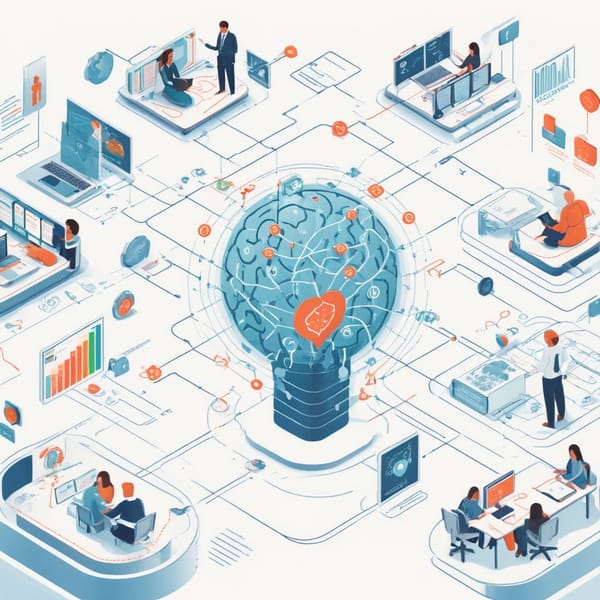AI-Powered Skill Gap Analysis in n8n Workflows: The Future of Automation

In today’s fast-evolving digital landscape, businesses are increasingly relying on automation tools like n8n to streamline workflows and boost productivity. However, as workflows grow more complex, identifying skill gaps in your team’s automation expertise becomes critical. Enter AI-powered skill gap analysis—a game-changing approach to optimizing your n8n workflows.
This blog post explores how AI can help you pinpoint skill gaps, recommend training, and ensure your team is equipped to harness the full potential of n8n.
Why Skill Gap Analysis Matters in n8n Workflows
n8n is a powerful, low-code/no-code automation tool that enables users to connect apps, APIs, and services with ease. While its intuitive interface lowers the barrier to entry, mastering advanced workflows—such as custom JavaScript functions, error handling, or API integrations—requires specialized skills.
Without a clear understanding of your team’s capabilities, you risk:
- Inefficient workflows due to poorly optimized automations.
- Bottlenecks when only a few team members can troubleshoot issues.
- Missed opportunities to leverage n8n’s full feature set.
AI-powered skill gap analysis helps bridge these gaps by providing data-driven insights into your team’s strengths and weaknesses.
How AI Enhances Skill Gap Analysis
1. Automated Skill Assessment
AI tools can analyze historical workflow executions, code quality, and error logs to assess proficiency levels. For example:
- Code Complexity Analysis: AI evaluates the sophistication of JavaScript snippets used in n8n workflows.
- Error Pattern Detection: Repeated mistakes in API calls or data transformations highlight areas needing improvement.
2. Personalized Learning Recommendations
Once skill gaps are identified, AI can suggest tailored training resources, such as:
- Interactive n8n tutorials for beginners.
- Advanced JavaScript courses for those needing deeper coding skills.
- API integration guides for teams working with external services.
3. Predictive Analytics for Future Needs
AI doesn’t just assess current skills—it predicts future requirements based on:
- Emerging n8n features (e.g., new node integrations).
- Industry trends (e.g., increased demand for AI-powered automations).
- Team growth projections (e.g., scaling automation efforts).
Implementing AI-Powered Skill Gap Analysis in n8n
Here’s how you can integrate AI-driven skill assessment into your n8n workflows:
Step 1: Collect Data
- Use n8n’s logging features to track workflow executions, errors, and user interactions.
- Integrate with tools like Google Analytics or Postman to monitor API usage.
Step 2: Deploy AI Analysis Tools
- Leverage platforms like IBM Watson or Google Vertex AI to process workflow data.
- Use natural language processing (NLP) to analyze documentation searches and forum queries from your team.
Step 3: Generate Insights & Action Plans
- AI dashboards can visualize skill gaps (e.g., "40% of team struggles with webhook configurations").
- Automate training assignments via n8n workflows (e.g., sending Coursera links via Slack).
Real-World Benefits
Companies using AI for skill gap analysis report:
- 30% faster onboarding for new n8n users.
- 50% fewer workflow errors due to targeted upskilling.
- Higher ROI on automation as teams leverage advanced features effectively.
Conclusion
AI-powered skill gap analysis transforms how teams approach n8n automation. By identifying weaknesses early, recommending precise training, and anticipating future needs, businesses can build a future-ready workforce.
Ready to supercharge your n8n workflows? Start integrating AI-driven skill assessments today—your team (and your bottom line) will thank you.
Would you like recommendations for specific AI tools or n8n workflows to implement this? Let me know in the comments!



